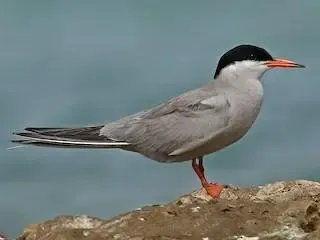Have Rare Arctic and White-Cheeked Terns Been Spotted for the First Time in Tamil Nadu's Puthalam Saltpans?

Synopsis
Key Takeaways
- Puthalam saltpans have become a vital site for migratory birds.
- First-ever sightings of Arctic and white-cheeked terns in Tamil Nadu.
- Environmental threats jeopardize the habitat of these rare species.
- 224 bird species recorded, emphasizing the area's ecological significance.
- Conservation efforts are crucial for sustaining migratory bird populations.
Chennai, Oct 19 (NationPress) Exciting news for avian enthusiasts as the rare presence of two unique species of terns — the Arctic tern (Sterna paradisaea) and the white-cheeked tern (Sterna repressa) — has been documented for the very first time in Tamil Nadu at the Puthalam saltpans located in Kanniyakumari district.
The sightings, noted on September 13 and 14, have been recorded on the global birding platform eBird, representing a significant milestone for ornithological records within the state.
Independent bird researcher Anand Shibu achieved the state's first-ever sighting of the Arctic tern, a species famed for undertaking the longest annual migration in the animal kingdom, traversing nearly 70,000 km between the Arctic and Antarctic regions.
The following day, returning to the site with fellow birder Bagavathi Balasubramanian, they observed another rare visitor — the white-cheeked tern, a species that thrives along the tropical and subtropical coasts of the Red Sea, the Persian Gulf, the Arabian Sea, and the Indian Ocean.
This discovery is noteworthy, as there have been only a few confirmed sightings of the Arctic tern across India — previously documented in Ladakh (1990), Mumbai, and Kerala.
The Puthalam record marks just the fifth occurrence in the country.
These findings underscore the increasing significance of the Puthalam saltpans as a vital location for migratory and coastal birds.
Additionally, the site also hosted two other rare and near-threatened species in August — the red knot (Calidris canutus) and the red-necked stint (Calidris ruficollis).
The red knot breeds in Arctic tundra and mountainous regions, while the red-necked stint is a small wader of Arctic origin.
With 224 bird species recorded thus far, Puthalam has emerged as an essential wintering, feeding, and roosting ground for migratory waders from far-off continents.
However, experts caution that the area is facing environmental challenges due to unregulated garbage dumping and encroachment pressures. Conservationists stress that safeguarding the saltpans and adjacent mudflats is critical for sustaining these migratory species, which depend on such habitats for rest and sustenance during their extensive transcontinental migrations.









